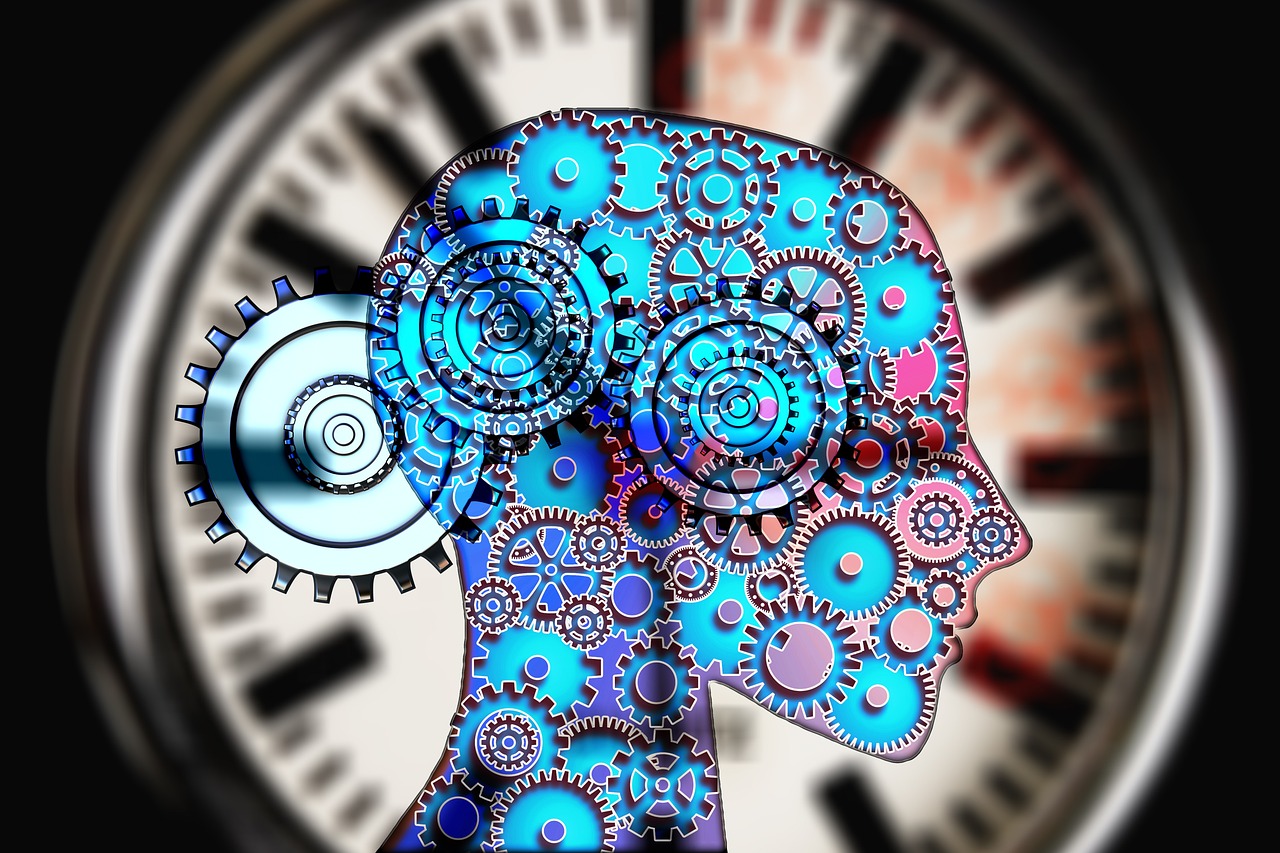How Market Psychology Affects Trading Decisions
The world of trading is not just about numbers and charts; it's a complex dance of human emotions and psychological factors that can greatly influence decisions. Imagine walking into a bustling marketplace where the atmosphere is charged with excitement and anxiety. Traders, much like shoppers, are swayed by their emotions, which can lead to both **brilliant successes** and **catastrophic failures**. This article delves into the intricate relationship between market psychology and trading behaviors, highlighting how emotions, cognitive biases, and social influences shape investor decisions and market trends.
Emotions significantly impact trading decisions, often leading to irrational behavior. Think of fear and greed as two powerful forces that can either propel a trader to success or lead them down a path of destruction. When the market is booming, **euphoria** can cloud judgment, causing traders to make impulsive decisions without considering the risks. Conversely, during a downturn, fear can paralyze even the most seasoned investors, preventing them from making sound decisions. Understanding how these emotions can influence trades is crucial for developing a disciplined trading strategy that can weather the emotional storms of the market.
Cognitive biases can distort traders' perceptions and lead to poor decision-making. It's like wearing tinted glasses that skew your view of reality. Common biases such as **overconfidence** and **confirmation bias** can create a false sense of security or lead traders to ignore critical information. For instance, overconfidence might cause a trader to believe they can predict market movements accurately, while confirmation bias may lead them to only seek out information that supports their existing beliefs. This section examines these biases and offers strategies to mitigate their effects, ultimately enhancing trading performance.
Overconfidence can lead traders to take excessive risks based on an inflated sense of their abilities. It's akin to a novice swimmer believing they can tackle the ocean's waves without any training. Recognizing this bias is essential for maintaining a balanced approach to trading. Traders must learn to assess their skills realistically and understand that the market is unpredictable. This self-awareness can prevent them from diving headfirst into risky trades that could jeopardize their financial health.
Overconfidence often results in inadequate risk management practices. Traders may neglect to set stop-loss orders or fail to diversify their portfolios, believing they can outsmart the market. This lack of caution can lead to significant losses when the market turns against them. Establishing a robust risk management framework is vital to counteract overconfident tendencies. This framework should include clear guidelines for position sizing, risk-reward ratios, and emotional checkpoints to ensure that decisions remain grounded in reality.
Implementing self-assessment techniques and seeking feedback can help traders counteract overconfidence. For example, maintaining a trading journal to reflect on past decisions can provide valuable insights into one’s trading patterns and biases. Additionally, surrounding oneself with a community of traders who provide constructive criticism can foster a more realistic view of one’s trading abilities. By cultivating humility and setting realistic expectations, traders can mitigate the risks associated with overconfidence.
Confirmation bias leads traders to favor information that supports their existing beliefs while ignoring contradictory evidence. It’s like a detective who only looks for clues that confirm their theory, disregarding crucial evidence that might lead to a different conclusion. Understanding this bias can improve decision-making processes and enhance trading outcomes. Traders should strive to seek out diverse perspectives and challenge their assumptions, promoting a more balanced approach to analyzing market conditions.
Social factors, including market sentiment and herd behavior, play a crucial role in trading decisions. The collective mood of investors can sway individual traders' choices, sometimes leading them to act against their better judgment. This section delves into how social dynamics can impact trading behaviors, often resulting in significant market movements.
Market sentiment reflects the overall attitude of investors toward a particular security or market. Analyzing sentiment can provide insights into potential market movements and trading opportunities. For instance, if the majority of traders feel optimistic about a stock, it may indicate a buying opportunity. Conversely, widespread pessimism can signal a potential downturn. By keeping a pulse on market sentiment, traders can make more informed decisions that align with the prevailing mood of the market.
Herd behavior occurs when traders mimic the actions of others, often leading to market bubbles or crashes. It’s akin to a flock of birds taking flight; when one bird moves, the rest follow without questioning why. This part explores the psychological underpinnings of herd behavior and its implications for trading strategies. Understanding the triggers of herd behavior can help traders resist the urge to follow the crowd and make more independent, rational decisions.
- What is market psychology? Market psychology refers to the emotional and psychological factors that influence the behavior of traders and investors in the financial markets.
- How do emotions impact trading decisions? Emotions like fear and greed can lead to irrational trading behavior, affecting decision-making and potentially resulting in losses.
- What are cognitive biases? Cognitive biases are systematic patterns of deviation from norm or rationality in judgment, which can distort a trader's perception and decision-making process.
- How can traders manage risk effectively? Traders can manage risk by setting stop-loss orders, diversifying their portfolios, and establishing a solid risk management framework.

The Role of Emotions in Trading
When it comes to trading, emotions are like the wild card in a poker game—they can make or break your strategy. Imagine you’re on a rollercoaster, with your heart racing as the market takes steep dives and exhilarating climbs. In this unpredictable environment, emotions such as fear, greed, and euphoria often lead traders to make decisions that defy logic. Understanding how these feelings influence trading behavior is not just important; it's essential for developing a disciplined approach to trading.
Let’s delve deeper into the emotional rollercoaster that traders experience. Fear, for instance, is a powerful motivator that can cause a trader to panic and sell their assets at a loss. This reaction is akin to running away from a lion you think is chasing you, even if it’s just your imagination. On the flip side, greed can lead to overextending oneself in the market, chasing after profits that may not be realistic. Just like a kid in a candy store, the thrill of potential gains can cloud judgment, pushing traders to take unnecessary risks.
Furthermore, euphoria can create an illusion of invincibility. When the market is booming, it’s easy to feel like a genius, but this can lead to complacency. Traders may ignore warning signs and continue to invest recklessly, thinking that their winning streak will last forever. The truth is, the market can turn on a dime, and those who don’t keep their emotions in check may find themselves in a precarious situation.
To illustrate the impact of emotions on trading decisions, consider the following table that summarizes these emotional influences:
| Emotion | Effect on Trading | Potential Outcome |
|---|---|---|
| Fear | Leads to panic selling | Loss of capital |
| Greed | Encourages risky investments | Overexposure to market volatility |
| Euphoria | Creates a false sense of security | Complacency and poor decision-making |
Recognizing these emotional triggers is the first step toward mastering them. Traders who are aware of their emotional states can develop strategies to manage their reactions. For example, implementing a trading plan with predefined entry and exit points can help mitigate the influence of emotions. By sticking to a plan, traders can avoid the temptation to make impulsive decisions based on fleeting feelings.
Moreover, practicing mindfulness and emotional regulation techniques can also be beneficial. Techniques such as meditation or deep breathing can help traders maintain a calm and focused mindset, even in the face of market turbulence. Just like a seasoned sailor navigating through a storm, having control over one’s emotions can make all the difference in successfully weathering market fluctuations.
In conclusion, emotions play a pivotal role in trading decisions, often leading to irrational behaviors that can jeopardize financial stability. By understanding and managing these emotions, traders can cultivate a more disciplined approach, ultimately enhancing their trading outcomes. So, the next time you feel your heart racing while checking your portfolio, take a moment to breathe and remember: emotions are part of the game, but they don’t have to dictate your moves.

Cognitive Biases in Trading
Cognitive biases are mental shortcuts that can significantly distort our understanding of reality, especially in the realm of trading. These biases often lead to irrational decision-making, where traders may act against their best interests, all because their judgment is clouded by preconceived notions or emotional responses. Understanding these biases is crucial for anyone looking to navigate the turbulent waters of the financial markets. By recognizing how these biases operate, traders can develop strategies to mitigate their effects, leading to more informed and rational trading decisions.
One of the most common cognitive biases encountered in trading is overconfidence bias. This occurs when traders overestimate their knowledge or ability to predict market movements. Imagine a pilot who has flown a plane a few times and suddenly believes he can handle any situation. This inflated self-assurance can lead to excessive risk-taking, where traders might invest heavily in positions without proper analysis or consideration of potential losses. To combat this, it’s essential for traders to maintain a balanced perspective and regularly evaluate their performance objectively.
Another prevalent bias is confirmation bias, where traders tend to seek out information that supports their existing beliefs while ignoring evidence that contradicts them. For instance, if a trader believes that a particular stock is a good buy, they might only pay attention to positive news about that stock and dismiss any negative reports. This selective attention can lead to skewed perceptions and ultimately poor trading decisions. By striving to consider a broader range of information and viewpoints, traders can make more balanced decisions.
To illustrate the impact of these biases, let’s consider the following table that outlines common cognitive biases in trading:
| Bias | Description | Impact on Trading |
|---|---|---|
| Overconfidence Bias | Overestimating one's knowledge or predictive abilities. | May lead to excessive risk-taking and poor risk management. |
| Confirmation Bias | Favoring information that supports existing beliefs. | Can result in ignoring critical information and poor decision-making. |
| Anchoring Bias | Relying too heavily on the first piece of information encountered. | May lead to mispricing of securities based on initial impressions. |
| Loss Aversion | The tendency to prefer avoiding losses over acquiring equivalent gains. | Can result in holding losing positions too long or avoiding necessary trades. |
Recognizing these biases is the first step toward improving trading outcomes. Traders can implement various strategies to counteract the effects of cognitive biases. For example, maintaining a trading journal can help individuals reflect on their decisions and identify patterns of bias in their trading behavior. Additionally, seeking feedback from peers or mentors can provide a fresh perspective and highlight blind spots that may have been overlooked.
In conclusion, cognitive biases are powerful forces that can shape trading decisions in both positive and negative ways. By being aware of these biases and actively working to mitigate their effects, traders can enhance their decision-making processes and improve their overall trading performance. In an environment where every decision counts, a clear, rational mindset is invaluable.
- What is cognitive bias in trading? Cognitive bias in trading refers to the systematic patterns of deviation from norm or rationality in judgment, leading to illogical decision-making.
- How can I identify my cognitive biases? Keeping a trading journal, seeking feedback, and regularly reviewing your trades can help you identify patterns of bias.
- Can cognitive biases be beneficial? While they often lead to poor decisions, some biases can help in quick decision-making in fast-paced environments, but they should be approached with caution.

Overconfidence Bias
Overconfidence bias is a fascinating psychological phenomenon that can significantly impact trading decisions. Imagine a trader who believes they possess an extraordinary ability to predict market movements, often leading them to take on risks that far exceed their actual knowledge and experience. This inflated self-assessment can cloud judgment, causing traders to overlook critical data and make impulsive decisions. The allure of potential profits can be intoxicating, but it often leads to disastrous outcomes when the market doesn’t behave as anticipated.
When traders fall prey to overconfidence, they tend to underestimate risks and overestimate their own abilities. This can manifest in several ways, such as:
- Taking larger positions than warranted
- Ignoring stop-loss orders
- Failing to diversify their portfolios
These behaviors can create a false sense of security, making traders believe that they are invincible in the market. However, the reality is that the market is unpredictable, and even the most seasoned traders can face unexpected downturns. Recognizing the existence of overconfidence bias is crucial for maintaining a balanced and disciplined trading approach.
To combat overconfidence, traders should implement a robust self-assessment strategy. This involves regularly evaluating past trades, acknowledging mistakes, and understanding the factors that led to both successes and failures. Seeking feedback from peers or mentors can also provide valuable insights that might be overlooked due to a skewed self-perception. By fostering humility and realistic expectations, traders can create a more sustainable trading environment.
Furthermore, establishing a solid risk management framework is essential in mitigating the negative effects of overconfidence. Traders should consider setting predefined risk limits and adhering to them, regardless of their confidence levels. This strategy not only protects against significant losses but also encourages a more analytical approach to trading decisions.
In summary, while confidence in trading can be beneficial, overconfidence can be detrimental. By recognizing this bias and implementing effective strategies to manage it, traders can enhance their decision-making processes and ultimately achieve better trading outcomes.

Impact on Risk Management
Overconfidence in trading can have a profound impact on risk management practices. When traders overestimate their abilities, they often take on risks that are not aligned with their actual skill level or market conditions. This inflated self-assessment can lead to significant financial losses, as traders may ignore critical risk factors or fail to implement adequate protective measures. Think of it like a novice swimmer who believes they can tackle the ocean’s waves without proper training or safety gear; the consequences can be dire.
To counteract the detrimental effects of overconfidence, establishing a robust risk management framework is essential. This framework should include clear guidelines on position sizing, stop-loss orders, and diversification strategies. By adhering to these guidelines, traders can create a safety net that helps mitigate potential losses, even when emotions run high. For instance, using a stop-loss order can prevent catastrophic losses by automatically closing a position when it reaches a predetermined price level.
Here are some key components to consider when developing a risk management strategy:
- Position Sizing: Determine the appropriate amount of capital to risk on each trade based on your overall portfolio size and risk tolerance.
- Stop-Loss Orders: Set predetermined exit points to minimize losses if the market moves against your position.
- Diversification: Spread your investments across various assets to reduce the impact of any single loss on your overall portfolio.
Additionally, it’s crucial to regularly review and adjust your risk management strategy. Market conditions are dynamic, and what worked yesterday may not be effective today. By staying vigilant and adapting to changing circumstances, traders can maintain a level of discipline that counters the impulsiveness often associated with overconfidence.
In summary, recognizing the impact of overconfidence on risk management is vital for any trader. By implementing a structured approach to risk, traders can protect their investments and foster a more sustainable trading practice. Remember, trading is not just about making profits; it’s also about preserving capital and managing risk effectively.
Q: What is overconfidence bias in trading?
A: Overconfidence bias refers to a trader's tendency to overestimate their knowledge, skills, or the precision of their forecasts, leading to excessive risk-taking.
Q: How can I improve my risk management practices?
A: You can improve risk management by setting clear position sizes, implementing stop-loss orders, diversifying your investments, and regularly reviewing your strategies.
Q: Why is emotional control important in trading?
A: Emotional control helps traders make rational decisions, preventing impulsive actions driven by fear or greed, which can lead to poor trading outcomes.
Q: What are some common cognitive biases in trading?
A: Common cognitive biases include overconfidence bias, confirmation bias, and loss aversion, all of which can distort decision-making processes.

Strategies to Combat Overconfidence
Overconfidence in trading can be a double-edged sword; while it might give you the courage to make bold moves, it often blinds you to the risks involved. To navigate this tricky terrain, implementing effective strategies is essential. First off, self-assessment techniques can be a game-changer. Regularly evaluating your trading performance allows you to see where you've succeeded and where you've stumbled. This honest reflection can help you recognize patterns of overconfidence and adjust your strategies accordingly.
Moreover, seeking feedback from peers or mentors can provide a fresh perspective on your trading decisions. Sometimes, we need an outside voice to point out flaws in our reasoning that we might overlook due to our inflated self-image. Engaging in discussions with other traders can also expose you to different viewpoints and strategies, which can be incredibly beneficial. It’s like having a personal coach—someone who pushes you to see beyond your own biases.
Another effective method is to set realistic goals for your trading activities. Instead of aiming for the moon, focus on achievable milestones that allow for gradual improvement. This approach helps curb the tendency to take excessive risks. You can even create a
| Goal | Action Steps | Timeline |
|---|---|---|
| Increase trading accuracy by 10% | Review past trades, adjust strategy | 3 months |
| Limit losses to 2% per trade | Implement strict stop-loss orders | 1 month |
| Attend 2 trading workshops | Research and enroll in workshops | 6 months |
Additionally, keep a trading journal. Documenting your trades, the rationale behind them, and the outcomes can help you see trends in your decision-making process. This practice not only provides accountability but also serves as a valuable resource for learning and growth. Over time, you’ll be able to identify moments when overconfidence led to poor choices, allowing you to adjust your mindset moving forward.
Lastly, consider utilizing risk management tools. Setting limits on how much you’re willing to lose on a trade can act as a safeguard against overconfident decisions. By establishing these boundaries, you create a safety net that can prevent emotional responses from derailing your trading strategy.
In summary, combating overconfidence requires a multi-faceted approach. By incorporating self-assessment, seeking feedback, setting realistic goals, maintaining a trading journal, and employing risk management strategies, you can cultivate a more disciplined trading mindset. Remember, the key is to remain humble and open to learning—trading is as much about the journey as it is about the destination.
- What is overconfidence bias in trading? Overconfidence bias occurs when traders overestimate their knowledge, skills, or ability to predict market movements, often leading to excessive risk-taking.
- How can I recognize overconfidence in my trading? Regularly reviewing your trading performance and comparing it with market outcomes can help you identify patterns of overconfidence.
- What are some tools to manage trading risks? Tools such as stop-loss orders, position sizing, and risk-reward ratios can help manage risks effectively.

Confirmation Bias
Confirmation bias is a fascinating psychological phenomenon that can have a profound impact on trading decisions. Essentially, it refers to the tendency of individuals to seek out, interpret, and remember information in a way that confirms their pre-existing beliefs or hypotheses. For traders, this can lead to a distorted view of the market, as they may ignore critical data that contradicts their established viewpoints. Imagine you're convinced that a particular stock is on the verge of a breakout. You might only pay attention to news articles and analyses that support this belief, while dismissing any negative reports or data that could suggest otherwise. This selective attention can cloud judgment and lead to poor investment choices.
One of the most dangerous aspects of confirmation bias is how it can create a feedback loop. When traders receive information that aligns with their beliefs, it reinforces their confidence, making them more likely to act on those beliefs without thorough analysis. This can lead to a series of trades based on flawed reasoning. For instance, if a trader believes that a stock will rise, they might ignore signs of declining fundamentals, leading to an eventual loss when the market corrects itself. It's like trying to navigate through a fog without a compass—you may feel confident in your direction, but that doesn't mean you're on the right path.
To combat confirmation bias, traders can adopt several strategies:
- Seek Diverse Perspectives: Actively look for information that challenges your beliefs. This could involve reading analyses from different sources or engaging in discussions with other traders who hold opposing views.
- Implement a Structured Decision-Making Process: Establish a set of criteria for making trades that relies on data and analysis rather than gut feelings. This could include technical indicators, fundamental analysis, or even a checklist of questions to ask before entering a trade.
- Regularly Review Past Trades: Reflect on previous trades to identify patterns of confirmation bias. Ask yourself whether you ignored any critical information and how that affected your outcomes.
By recognizing and addressing confirmation bias, traders can enhance their decision-making processes and improve their overall trading outcomes. It's essential to remember that the market is constantly changing, and holding onto outdated beliefs can be detrimental. Just as a ship must adjust its sails to navigate changing winds, traders must be willing to adapt their strategies based on new information and insights.
What is confirmation bias?
Confirmation bias is the tendency to favor information that confirms one's existing beliefs while disregarding contradictory evidence. This can lead to poor decision-making, especially in trading.
How can I identify confirmation bias in my trading?
You can identify confirmation bias by reflecting on your decision-making process. Ask yourself if you've been ignoring information that contradicts your beliefs or if you've only sought out data that supports your views.
What strategies can help mitigate confirmation bias?
To mitigate confirmation bias, seek diverse perspectives, implement structured decision-making processes, and regularly review past trades to recognize patterns of bias.
Why is it important to address confirmation bias in trading?
Addressing confirmation bias is crucial because it can lead to irrational decisions, resulting in significant financial losses. By being aware of this bias, traders can make more informed and balanced decisions.

The Influence of Social Factors
When it comes to trading, the influence of social factors can be as powerful as any technical indicator or financial report. Imagine walking into a crowded room where everyone is buzzing about the latest stock tip. The energy is palpable, and before you know it, you might find yourself swept up in the excitement, making decisions based on the crowd rather than your own analysis. This phenomenon is not just a casual observation; it’s a significant driver of market behavior. Social factors, including market sentiment and herd behavior, play crucial roles in shaping how traders make decisions.
Market sentiment, for instance, is the general attitude of investors toward a particular security or the market as a whole. It can be influenced by various factors such as news reports, earnings announcements, and even social media chatter. When sentiment is positive, traders may feel more inclined to buy, pushing prices higher. Conversely, negative sentiment can lead to panic selling, causing prices to plummet. Understanding market sentiment is like having a sixth sense; it allows traders to gauge the mood of the market and potentially capitalize on emerging trends.
Additionally, herd behavior can significantly impact trading decisions. This is when traders follow the crowd, often leading to irrational market movements. Think of it like a flock of birds; when one bird takes off in a particular direction, the rest quickly follow, sometimes without understanding why. In trading, this can lead to market bubbles or crashes, as prices become detached from underlying fundamentals. Recognizing the signs of herd behavior can help traders make more informed decisions, allowing them to either join the trend or, more importantly, avoid the pitfalls of following the crowd blindly.
To illustrate the impact of social factors on trading, consider the following table that summarizes key influences:
| Social Factor | Description | Impact on Trading |
|---|---|---|
| Market Sentiment | The overall attitude of investors towards a security or market. | Can drive prices up or down based on collective feelings. |
| Herd Behavior | Traders mimicking the actions of others. | Can lead to irrational price movements, bubbles, or crashes. |
| Social Media Influence | Information spread through platforms like Twitter or Reddit. | Can create rapid shifts in sentiment and trading volume. |
In conclusion, the influence of social factors in trading cannot be overstated. By understanding how emotions, market sentiment, and herd behavior affect their decisions, traders can develop more effective strategies. It's essential to remain aware of these dynamics and not let the crowd dictate your trading choices. Instead, aim to balance social influences with your analysis and risk management practices.
- What is market sentiment? Market sentiment refers to the overall attitude of investors towards a specific security or the market as a whole, which can influence buying and selling decisions.
- How does herd behavior affect trading? Herd behavior can lead traders to follow the crowd, often resulting in irrational market movements, such as bubbles or crashes.
- Can social media influence trading decisions? Yes, social media can significantly impact market sentiment and trading volume, as information spreads quickly and can sway investor opinions.

Market Sentiment Analysis
Market sentiment is like the collective heartbeat of investors, reflecting their emotions and attitudes towards a specific security or the broader market. It's fascinating how the mood of the market can sway prices and influence trading decisions. Just imagine walking into a crowded room where everyone is buzzing with excitement; that energy is palpable and can lead to a surge in enthusiasm. Similarly, when investors are feeling optimistic, they tend to buy more, pushing prices up. On the flip side, when fear grips the market, it can lead to a sell-off, creating a downward spiral.
Understanding market sentiment is crucial for traders looking to make informed decisions. By analyzing sentiment, traders can identify potential turning points in the market. For instance, if the majority of investors are overly bullish, it might signal that the market is overheated and due for a correction. Conversely, extreme pessimism could indicate that a market rebound is on the horizon. This emotional landscape can be assessed through various indicators, such as:
- Surveys and Polls: These gauge investor sentiment and can provide insights into how the majority feels about the market.
- Social Media Trends: Platforms like Twitter and Reddit can reflect real-time sentiment, with many traders discussing their thoughts and predictions.
- Market Indicators: Tools like the Fear & Greed Index help quantify sentiment, allowing traders to see whether the market is driven by fear or greed.
Moreover, keeping an eye on news headlines and economic reports can also provide context for shifts in sentiment. For example, a positive earnings report from a major company can uplift market sentiment, while geopolitical tensions might create a wave of uncertainty. Thus, sentiment analysis is not just about numbers; it’s about understanding the story behind those numbers and what they mean for future price movements.
Incorporating sentiment analysis into your trading strategy can be a game-changer. It allows you to anticipate market trends and make decisions that align with the prevailing mood. However, it's essential to combine sentiment analysis with other forms of analysis, such as technical and fundamental analysis, to create a well-rounded view of the market. After all, while emotions play a significant role in trading, they should not be the sole basis for decision-making.
- What is market sentiment? Market sentiment refers to the overall attitude of investors towards a particular security or market, influenced by emotions and perceptions.
- How can I measure market sentiment? Market sentiment can be measured through surveys, social media analysis, and market indicators like the Fear & Greed Index.
- Why is market sentiment important for traders? Understanding market sentiment helps traders anticipate potential market movements and make informed trading decisions.

Herd Behavior in Trading
Have you ever noticed how people tend to follow the crowd? This phenomenon, known as herd behavior, is particularly evident in the world of trading. When investors see others making moves, whether it's buying or selling, they often feel compelled to do the same. This instinctual response can lead to significant market fluctuations, sometimes resulting in market bubbles or even crashes. The psychology behind this behavior is fascinating and can have profound implications for individual traders.
At its core, herd behavior stems from our innate need for social acceptance and fear of missing out (FOMO). Imagine being at a concert where everyone is dancing and having a great time. You might feel the urge to join in, even if you're not that into dancing. This same principle applies to trading; when prices start to rise and everyone around you is profiting, the fear of being left out can push you to make impulsive decisions. Unfortunately, this can lead to buying into overvalued stocks or selling during a panic, ultimately harming your trading strategy.
To better understand how herd behavior manifests in trading, consider the following factors:
- Market Trends: When a particular stock or sector is trending upwards, it often attracts more buyers. This can create a self-fulfilling prophecy where rising prices draw in even more investors.
- Social Media Influence: In today's digital age, platforms like Twitter and Reddit can amplify herd behavior. A single post can spark a buying frenzy, leading to rapid price increases.
- News and Rumors: Traders often react to news reports or rumors without fully analyzing the underlying facts. This can lead to mass panic selling or irrational buying.
Understanding herd behavior is essential for developing a sound trading strategy. By recognizing when you're being influenced by the crowd, you can make more rational decisions based on your research rather than emotions. It’s crucial to maintain a level head and stick to your trading plan, even when it feels like everyone else is going in a different direction. The key is to differentiate between genuine market signals and the noise created by collective sentiment.
In conclusion, while herd behavior can lead to short-term gains, it often results in long-term losses for those who fail to recognize its influence. By cultivating awareness of this psychological tendency, traders can navigate the markets more effectively and make decisions that align with their individual goals rather than succumbing to the whims of the crowd.
- What is herd behavior in trading? Herd behavior in trading refers to the tendency of investors to follow the actions of others, often leading to irrational decision-making and market volatility.
- How can I avoid falling into herd behavior? To avoid herd behavior, it's essential to conduct thorough research, stick to your trading plan, and remain aware of your emotional responses to market movements.
- What are the consequences of herd behavior? The consequences of herd behavior can include buying into overvalued assets, selling during market panics, and ultimately experiencing significant financial losses.
Frequently Asked Questions
- How do emotions affect trading decisions?
Emotions play a significant role in trading, often leading to irrational decisions. Fear can cause traders to sell prematurely, while greed may push them to take excessive risks. Understanding and managing these emotions is crucial for developing a disciplined trading strategy.
- What are cognitive biases, and how do they impact trading?
Cognitive biases are systematic patterns of deviation from norm or rationality in judgment. In trading, biases like overconfidence and confirmation bias can distort perceptions and lead to poor decision-making. Recognizing these biases is essential for making informed trading choices.
- What is overconfidence bias, and why is it dangerous?
Overconfidence bias occurs when traders overestimate their knowledge or ability, leading to excessive risk-taking. This bias can result in significant losses if traders fail to adequately assess risks. It's essential to maintain a balanced approach and be aware of one’s limitations.
- How can traders manage risk effectively?
Establishing a robust risk management framework is vital for all traders. This includes setting stop-loss orders, diversifying investments, and regularly reviewing trading strategies. By implementing these practices, traders can better protect themselves from the adverse effects of overconfidence.
- What is confirmation bias in trading?
Confirmation bias is the tendency to search for, interpret, and remember information that confirms one’s preexisting beliefs. In trading, this can lead to ignoring critical data that contradicts a trader's strategy, ultimately harming decision-making processes and trading outcomes.
- How does market sentiment influence trading?
Market sentiment reflects the overall mood of investors towards a particular security or market. Analyzing market sentiment can provide valuable insights into potential price movements and help traders identify lucrative trading opportunities.
- What is herd behavior, and how does it affect the market?
Herd behavior occurs when traders mimic the actions of others, often leading to market bubbles or crashes. This psychological phenomenon can distort market dynamics, making it crucial for traders to remain aware of their own decisions and avoid blindly following the crowd.



















